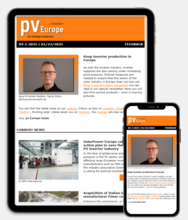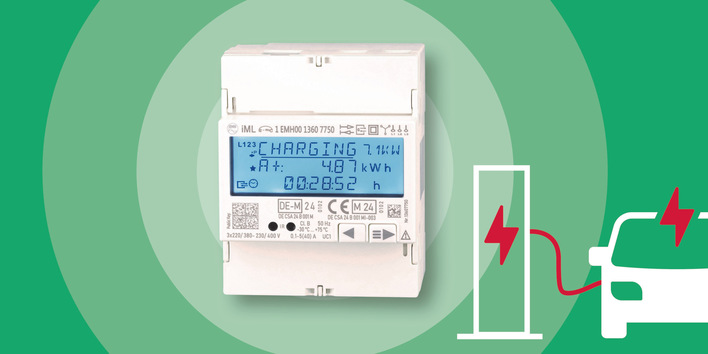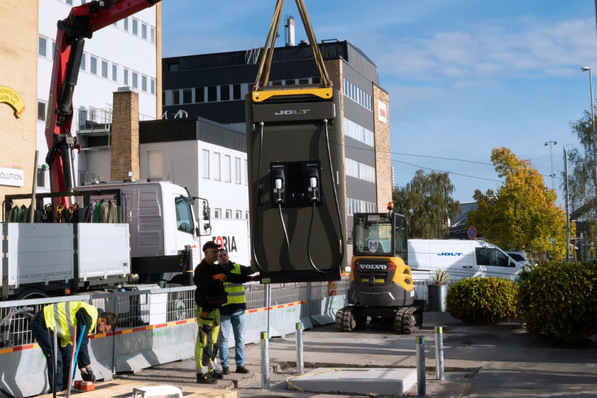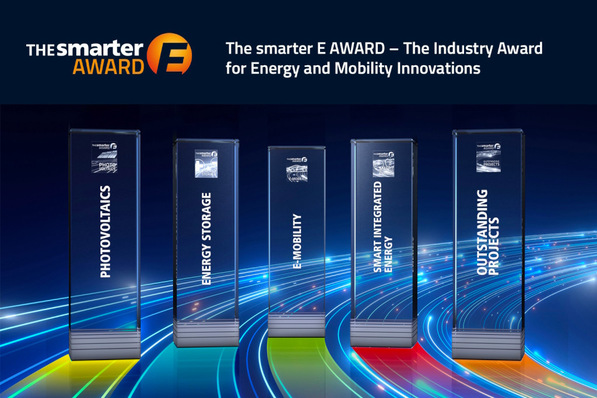Researchers at the Fraunhofer Institute for Solar Energy Systems (ISE) conducted a detailed analysis of several wallboxes available on the market, using their in-house developed digital vehicle twin to simulate the behaviour of 5,000 different electric vehicles. The team, working in Fraunhofer ISE's digital Gridlab, identified significant differences between the devices, focusing particularly on their customised operation – both in terms of supplying solar power from the building's roof and adapting to variable electricity prices.
High solar power charging
The researchers focused primarily on the speed of control, investigating how quickly the wallboxes detect changes and how promptly they can react. The key aim was to ensure that the wallboxes could respond as swiftly as possible to variations in the solar power supply, efficiently charging as much surplus energy as possible from the roof into the batteries.
Stay up to date on the solar energy transition and subscribe to our free newsletter.
The Fraunhofer scientists also analysed how fast the wallboxes switch from single-phase to three-phase operation. “A fast control speed with high control quality is crucial for solar-controlled charging,” explains Bernhard Wille-Haussmann, project manager of the wallbox inspection. “In practical operation, this means that the control by the wallbox follows the solar surplus as closely as possible.”
Delays of up to 90 seconds measured
The result: the wallboxes varied in their reaction time to changes in the solar power supply. While some of the devices adjusted their charging power immediately, other devices took up to 90 seconds. In their tests, the researchers also discovered that the energy management system of many wallboxes needs to be adjusted to achieve good regulating quality, leading them to suggest to users of devices to adjust them to the vehicle and their own needs. “This makes the devices work more precisely than with standard settings,” says Bernhard Wille-Haussmann. “To do so, the differences between the devices from the various manufacturers are less pronounced. The characteristics of the individual energy system play a major role.”
The smarter E Europe: Save billions with bidirectional charging
Measuring power consumption
The researchers also analysed the power consumption of the wallboxes, revealing significant differences among the devices. For example, only a few models activate the so-called deep standby mode to save electricity.
Displaying differences in quality
The scientists at the Berlin University of Applied Sciences (HTW) used the test results to develop a wallbox score, which quantifies the quality differences between the products. This score is based on simulation calculations derived from measurements taken in accordance with the test guidelines used by the researchers at Fraunhofer ISE.
PV Guided Tours: Up close with the innovations
Setting parameters correctly
The project partners also want to use the transparent and standardised measurement procedure and the measurement results to provide wallbox manufacturers with information on how they can optimise the quality and energy efficiency of their devices. The results will show end users and installers which parameter settings result in the optimum utilisation of solar energy. (su)








